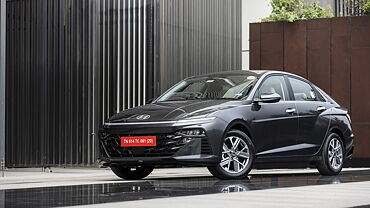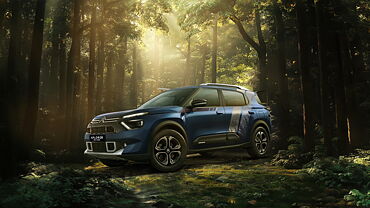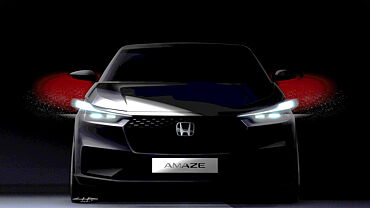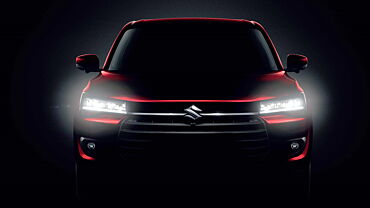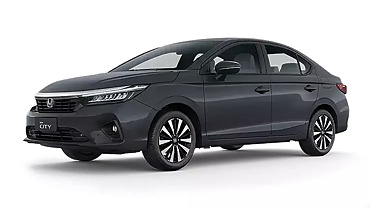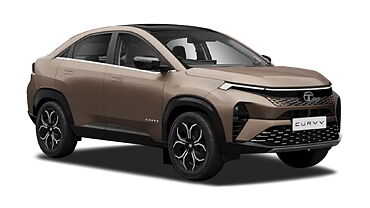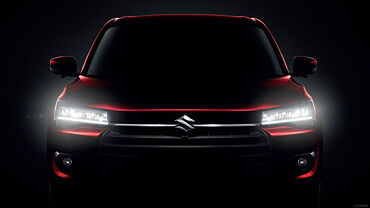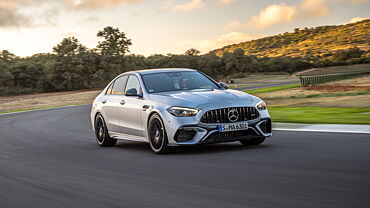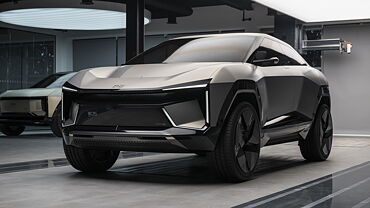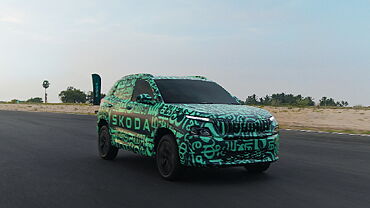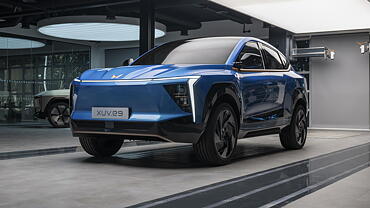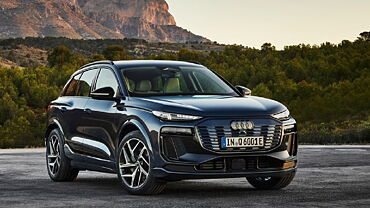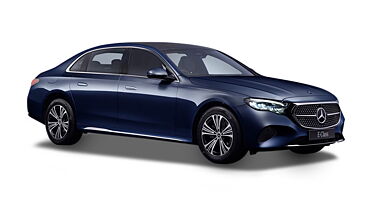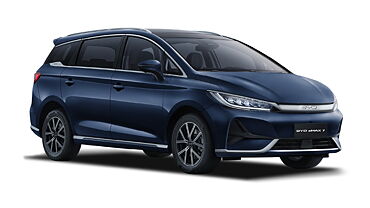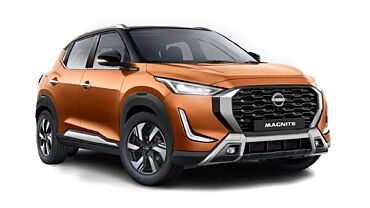Introduction
Some people cannot drive a car without a music system. It is not just an accessory for them but an essential component of the car. Car buyers in India are quite enthusiastic about their car audio systems. This is especially true in case of youngsters who opt for different types of car audio systems and are picky of tweeters and woofers.
Introduction to the Electric Car
Electric cars and hybrids have come of age. Although they have existed in the global auto industry for many decades, growing environmental concern, pollution hazards and a declining amount fossil fuels have led to the fast emergence of alternative fuel technology.
Green is in as never before, as carmakers trumpet how low their models' carbon dioxide emissions can go - and lower than an EV is not possible! There are several companies today all over the world that are engaged in manufacturing cars that use electric motors and controllers. These cars run on batteries that provide the energy supply to run an engine. Over time, capacitors and other advanced versions of fuel cells will be used in these cars.
The key aspect of using such cars is that they do not harm the environment. The days that we will be having high end charging stations for these cars - similar to the filling stations we have for the conventional gasoline based cars today - seem not far.
Though the running costs of conventional cars and electric cars are comparable, the servicing costs are somewhat lower for electric cars and hence one can at least give a thought to the issue of possessing an electric car. Researchers have also said that the efficiency of electric cars is better.
That being said, in the current state of affairs, the key consideration in buying an Electric Vehicle must be the environment, and perhaps, a better controllobility of cost - after all, petrol and diesel prices are decided in the Middle East, whereas electricity prices are more stable.
In this auto guide, Shiva and Payal take a look at the Electric Car.
Workings of the Electric Car
As the name indicates, Electric cars are run by electricity - an alternative fuel - and do not use popular internal combustion engines. The electric motor is at the core of an electric car and it is powered by an array of rechargeable batteries.
While it goes to far to analyze the detailed working of an electric engine, the core is that it converts electric energy into kinetic energy - motion energy that is used to rotate the engine shaft which then drives further movement in the car. In a nutshell, an electric current can be used to generate an magnetic field.This field can cause rotation within magnetic parts of the engine - namely the rotor - thus causing the rotation of the driveshaft and other parts. In fact, this magnet often contains rare metals, which is one of the significant components of the EV's price.
At the same time, many electric cars embed technology that converts kinetic energy into electric energy. This is similar to a dynamo on a bicycle which makes the light burn. It's basically the opposite process, and it can be used for example when you are applying the brake, and kinetic energy is not needed.Of course, charging can also be done through "plugging the battery in", which is a different charging process.
Electric motors used to be based on D/C but research has led to the construction of A/C motors too.
Companies and their EV Plans
Many consumers are considering the environment during purchasing their car. Moreover, many of them wish to reduce their dependence on traditional fuels. Governments too support such initiatives and are incentivizing OEMs to pursue an electric agenda. Hence, the EV is high on the task list of each OEM! Many companies have launched or will soon be launching their EVs.
The recent Tokyo Motor Show showcased various electric cars, and there's some exciting things coming up!
Many OEMs already have electric vehicles on the market - be it in hybrid form (see below). For example, Chevrolet, Ford, Nissan and Toyota, all have electric cars for sale in the market already.
Let's take a look at some future plans in this field.
Toyota - the leader of the pack
Launched in 1996 in Japan, Toyota was the first with an electric car - the Toyota Prius. Though technically a hybrid car (it has both a fuel engine and an electric engine), the car is touted for its environmental friendliness. Toyota is now a leader in alternative fuel based hybrid cars with its most popular model. Moreover, the Prius is expected to be launched in India by next year.
Nissan - the Leaf
Nissan plans to launch an electric version of the InfinitiM35 by 2011 with luxury features. It has already introduced Nissan Leaf which is a zero emission car that does not even have a tail pipe. The new LEAF, lithium ion-powered electric car is the fulfillment of a daring pledge. With seating for five adults, the five-door hatchback promises a range of 160 km (100 mi).
The Chevrolet Volt
Notwithstanding its financial problems, GM has persisted its electric vehicle plans. General Motors plans to launch Chevy Volt, an extended range electric car using gasoline to take over after 40 miles of driving using a lithium ion battery.
Some other OEMs
Even sports cars are not left behind. Audi has revealed a battery-electric version of its R8 sports coupe at the Frankfurt Auto Show 2009. Other automakers like BMW and Mercedes are also in the process of developing electric vehicles, including hybrid cars that also have a small gas or diesel engine to back up the electric motor. As the batteries get smaller and less bulky it is expected that the prices of the same will drop significantly.
Daimler’s first B-class F-cell model will hit the roads by the end of 2009. It will also develop a high-performance electric version of its sports car Mercedes-Benz SLS AMG.
The Volkswagen E-Up! Is a compact car powered by an electric motor and is expected to go into production by 2013. Tesla’s electric sedan model S will be available within two years from now. Honda has revealed its EV-N concept at the Tokyo Show with a retro-look but an all-clean drive technology.
Electric cars or ‘green cars’ are in demand and auto makers across the globe have started treading this path slowly. They are still addressing issues like increasing range and re-charging facilities, but it's clear that there is a lot of action coming yet!
Electric Cars and India
Given the huge size of the Indian vehicle market, OEMs are also considering their EV plans for the country. Let's take a look at what's happening in India.
India's Premier EV company, Reva Electric Car Company and its brand of Reva cars are known all over the world. It tops the charts in India and even the UK where it records maximum sales. The company is based in Bangalore where it marks its strongest presence. The car is also present in other major cities of India like Hyderabad, Ahmedabad, Delhi, etc., though it is not available in all states. The company intends to introduce its two latest models Reva NXG and NXR in India next year.Do read the next section in which a full description of the company is given.
Although the concept of electric cars has not yet picked up in India, the idea is slowly gaining momentum. General Motors has recently signed an MoU with Reva Electric car company to produce an electric model of its popular small car Chevrolet Spark. General Motors India will use Reva’s platform to build electric variants of the Chevrolet Spark that will be sold in India and overseas.
Tata Motors is also planning to introduce an electric variant of its hatchback model Indica Vista in India. The model is not expected in India soon but Tata Motors has already completed building its plant in Norway where the Indica Vista electric variant will be built and mainly sold. Moreover, Tata Motors has also been granted a loan from the British government to set up its electric car project in the UK to manufacture the Indica electric model for Britain. Tata Motors is still weighing its options about an E-Nano model which will be the electric variant of the world’s cheapest car, the Tata Nano.
Other auto manufacturers who are contemplating electric options in India are Hero Electric, Mahindra and Mahindra, Ajanta Electric Cars and Mitsubishi Motors.In fact, Ajanta recently announced a deal in which it will market Chinese Electric Cars in India!
Cost of Ownership
Since the Reva is the only electric car available in India, the cost of ownership can be analyzed for its models alone. Let us consider the average fuel efficiency of a petrol car at around 15KMPL covering approximately 2000 KM in a month. The total cost spent on fuel per month with the cost of petrol at Rs. 50 per liter would come to be around Rs 6666. In case of a diesel car with cost of diesel at Rs. 36 per liter, the monthly fuel cost would be Rs 4800. Therefore the cost per KM with respect to fuel consumption would be Rs 3.3 per km with petrol and Rs 2.4 per km with diesel. Contrastingly, it takes ten units of electricity to completely charge a Reva. Therefore a charge would cost about Rs. 40 each time and the car is then capable of running about 80kms. This means the cost per KM for a Reva is only Rs. 0.50. Moreover, the battery requires a change every 3 years which costs Rs. 65,000. So essentially, a Reva then compares to a Petrol car. These cars must not be thought of as cheaper necessarily but should be opted for out of choice.
Reva’s are specifically designed to be low maintenance. They are a less polluting and cost effective means of transport within a city or 40km radius. The two major shortcomings of the Reva in comparison to its petrol and diesel powered counterparts in this price range are power and distance. In the Rs. 4-5 lac range there are numerous cars with engines in the 65-85 bhp class and which can run well over 250 kms in a full tank.
Comparison with Other Engines
It has been touted that the maintenance or service costs of electric cars is much less in comparison to that of conventional cars. Hybrid electric cars that use both gasoline technology and new electric technology are also in vogue these days. The efficiency of electric cars is said to be better than of conventional cars. There is lesser generation of carbon dioxide by electric cars and moreover, they are far quieter.
| Parameter | Petrol | Diesel | Electric |
| Starting price of new car | 1.6 Lac | 5 lac | 3.8 lac |
| Payload capacity Min | 200-500Kg+ | 200-500Kg+ | 227Kg |
| Cost per KM | 3.3 | 2.4 | 0.25 |
| Range of usage | 200km+ | 200km+ | 80km |
| Long drive and offroad ability | Good | Good | Limited |
| Range of cars | Good | Good | Limited |
| Pollution | High | High | Low |
| Fuel wastage in idling, traffic etc. |
Reva Company - an Overview Reva Electric Car Company was incorporated in 1994. It is a joint venture between The Maini Group, India, and AEV LLC, California, USA. The company is based at Bommasandra Industrial Area in Bangalore. The company works on a unique “Zero Principle.” This includes zero inefficiency, zero time delays, zero defects and zero pollution which is achieved through zero wastage and zero compromises on quality. The joint venture was established to provide environment friendly and cost-effective electric cars to the world. REVA, the first electric car model of India, was introduced by the company in 2001. It was unveiled by the erstwhile President of India, Sri Krishnakant. The electric vehicle model was largely aimed at urban mobility for city trips and commuting particularly for congested city traffic. The Reva-i model currently has a capacity of seating two adults and two children below 12 years. Its payload is 227 kgs and it can attain a top speed of 80 kmph. It charges 80 percent in two hours and 100% in eight hours. It can cover a range of 80 km on full charge. It is readily available in India for city commuting. Reva is sold in the UK market as Reva G-Wiz. It is registered in Europe as a heavy quadri-cycle which means it does not have to pass safety tests. In the UK market, Reva is sold as G-Wiz-i and the standard model costs approximately Rs.6.45 lakh. The L-ion model costs approximately Rs. 12 lakh. It is exempted from London Congestion charge as it is an electrically powered vehicle. It is expected to be exported to the US market with a speed limiter that will limit its speed to 25 miles per hour so that it can be used at NEV or Neighborhood Electric Vehicle. Reva i model is also sold in Costa Rica where it is sold for approximately USD 13,000 or Rs. 6.11 lakh. Reva-i model is also exported to Spain and Norway where the prices are quite similar to those in the UK.Reva costs approximately Rs. 3.50 lakh in India and has running cost of approximately Rs. 0.50 per km. Reva Electric Car Company is setting up its second plant in Bangalore and will soon have additional production capacity of 30,000 units. It will introduce two new models in the international market next year – Reva NXR and NXG. Production of NXR model will commence by early 2010 while the NXG model will go into production by 2011. Both the model were recently unveiled at the Frankfurt Auto Show held in September 2009. RECC will showcase these models at the upcoming Delhi Auto Show 2010 next year in January. In a recent exciting development, the Reva Company has struck a tie-up with Chevrolet India. One of the core points of this tie-up is a development of an Electric Chevrolet Spark, which will increase the appeal of the little Spark even further! Reva Test Drive The following are excerpts from my experience of test driving the Reva. Upon arriving at the showroom, I was pleasantly greeted by a Reva executive. It was really nice to see the stylish cute machines parked in the show room. The executive showed me around the outlet and provided full specifications of the cars. The functioning of the car is divided into 5 parts. It is powered by 6 48V, 200 Amp-hr, EV Lead acid batteries. The high torque (52 NM) Induction motor is controlled by a 350 Ampere microprocessor with regenerative braking capability. The charger is a 220V, 2.2KW, high frequency switch mode type. 80 percent of charging is completed within just 2.5 hours and the remaining 20 percent takes about 5.5 hours. The body style is typically international looking. It is built with a running chassis which ensures complete safety of occupants as the impact is transferred to the body shell. The interior offers comfortable seating for two persons and two children. The instrument cluster has a battery charge indicator, speedometer with readings in both miles/hr and kms/hr. Though it does not have gears to operate, the Reva has a control knob to switch modes from Neutral to Forward, Boost and Reverse. While Forward is for normal travel speed, Boost provides for instantaneous acceleration during overtaking of other vehicles. Before starting the car (Top end model) I was instructed on how driving a Reva is different from a conventional car. The gear knob must be in the neutral position before starting. Turn the key and the vehicle is on. Next, the knob must be switched over to the “forward” mode and then upon accelerating, the vehicle begins to move. Accelerating in a Reva is very different from anything I had ever driven before. It’s like operating a switch with your foot. I was a bit more cautious while driving as I was driving on one of the busiest roads in Bangalore, Mahatma Gandhi road. Traffic was heavy at 6pm. Driving the car was very easy and the speed was just enough for city driving conditions. I dared to drive faster between traffic lights and also took a sharp turn during which I felt a tad unsafe. It seemed as though the vehicle could have lost its balance and toppled. Fortunately I made it back safely. Meanwhile I was talking to the executive about what to do if the vehicle was to lose all its power while on the road. In this scenario, the only solution would be to call Reva’s customer care. If there was enough power to drive for another 5-10kms then the Reva owner’s network could come to the rescue. One could simply use another Reva owner’s charger. This car is not best suited to be driven outside of a city. If so one should ensure that there are a lot of Reva owners en route who can come to ones aid. As far as storage is concerned, apart from the glove box, there is also space for putting things in the door pad covers. In the rear there is ample space for putting luggage and the same can be increased by folding the rear seat. Reva is available in three variants STD (AR), AC (ARA) and CLASSE (ARAD) that cost Rs. 3.74 lacs, Rs.4.25 lacs and Rs. 4.57 lacs respectively in Bangalore. The various colour options are Passion Yellow, Cherry Red, Angel White, and in metallic colours like Blue Envy, Midnight Black, and Silver arrow for an extra Rs. 4000. Reva is definitely a pioneer in the Indian electric car segment. It is expanding its manufacturing capacity to cater to the demand of the global market as well. With new models like the NXG and NXR coming from the Reva stable, the company is launching itself as a competitive global player. The NXG model will be a 5-door hatchback which will be the next generations green family car. |
||

